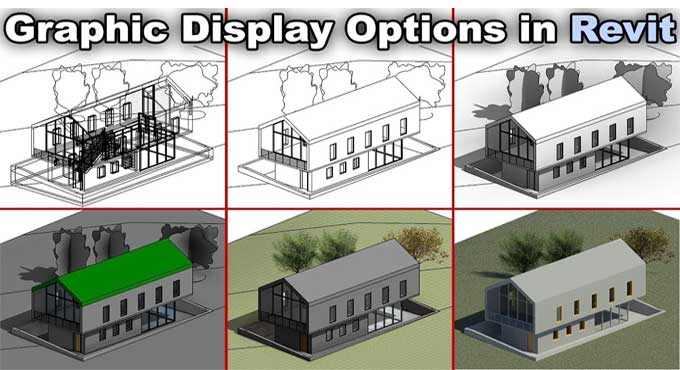An improvement in Revit's 3D graphics is in the works
Tweet
There are going to be many changes and improvements to the 3D graphics of Revit. A new graphics engine will improve Revit and 3ds Max performance, among other applications, according to Autodesk.
A ray-tracing engine will also be integrated directly into the viewport in the 'next-generation' system, boosting visual quality. Regardless of the graphics hardware and complexity of the model, it should be possible for users to switch between a shaded view and a photorealistic view easily.
One Graphics System (OGS) was completely restructured with the new viewport system, which takes vector data and converts it to pixels using rasterization.
Modern Graphics Processing Units (GPUs) are notoriously hard to use in Revit. In 2015, the 'draw visible elements only' feature was added to the graphics engine, which has only seen a few improvements over the years.
Other updates and improvements
While Revit uses an older graphics API, the frequency of the CPU remains a major bottleneck for its 3D performance, as it is with many other tools that use older graphics APIs. When working with large models, the GPU resources on AEC Magazine's workstations are often underutilized, resulting in poor 3D performance.
This needs to be addressed by Autodesk's new viewport system, which should allow users to view their models more smoothly without having to rely on software to simplify them.
The use of modern graphics APIs such as DirectX 12 and Vulkan will allow Autodesk's applications to communicate directly with the GPU hardware rather than routing everything through a graphics driver and make better use of multi-core CPUs.
Modern graphics cards, including Nvidia RTX and AMD and Intel GPUs, support hardware-based ray tracing as well.
Tools to be improved
Nvidia GTC showtime
Real-time ray tracing was used rather than shaded views to assess performance.
Architects, engineers, and designers can switch to full ray-traced quality at the click of a button when working on a model in the viewport. Currently, Revit is dependent on CPU rendering, which can be slow and produce mixed results.
The new engine, according to reports is aimed at offering a real-time experience similar to game engines. While photorealism is important, performance is a top priority.
Reports indicate that non-rendering experts will have no problem using it. Similarly, Revit's wireframe, shaded, and realistic modes will be paired with this new style.
Nvidia GTC showtime
An Autodesk Inventor-based welding robot model was demonstrated as a path traced reference application. Autodesk Inventor 2022 uses a rasterisation engine that is not as photorealistic as the one used by Autodesk Inventor's earlier versions.
An environment light and a single directional light lit the scene. In the demonstration, several aspects of the render quality in this scene, including contact hardening soft shadows, realistic ambient occlusion, and glossy reflections, focus on the subtle reflection of a red socket on a black surface where highlighted.
A frame budget of 30 frames per second was set in order to achieve a smooth viewport experience. By casting more rays and denoising, the image resolves very quickly when idle, despite some 'noise' when moving the camera.
After the presentation, the new engine was demonstrated working inside Autodesk 3ds Max, Maya, and Inventor.
To get online demonstration, watch the following video tutorial.
Video Source: Balkan Architect
More architectural flexibility
A decoupled architecture allows the applications and graphics systems to be less tightly intertwined in the new viewport system. That will allow future software and hardware development to be more flexible. Pixar's USD is handling this through Hydra.
DirectX Raytracing (DXR) is currently used in the system, but Autodesk plans to use Vulkan Raytracing, which was released earlier this year.

Gallery
Feel free to contact us for BIM requirements. One of our representative will respond you within 24 Hours. Send us your projects requirement today and grow your project.
Explore More !







